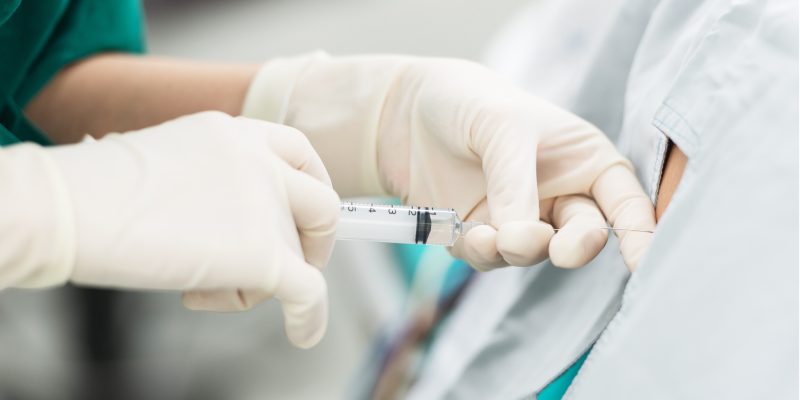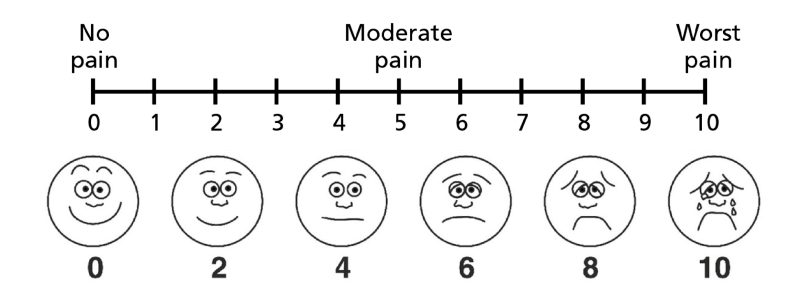
Spinal services
What is it?
A nerve root block is an injection of a mixture of local anaesthetic and a steroid around a nerve as it exits the spine.
Why is it done?
This is used when a particular nerve in the lower back is inflamed due to irritation from either a disc prolapse or narrowing of the spinal canal due to degenerative wear and tear.
A nerve root block is not a cure, but aims to relieve your symptoms by reducing the inflammation caused by the mechanical irritation of the nerve.
In patients who have had a MRI scan that shows problems in different parts of the spine a nerve root block can provide useful information to help identify the source of your pain.
The procedure
A nerve root block is carried out as a day case procedure in the neuroradiology department. When you arrive you will be taken to a changing room where you will put on a hospital gown.
Once you are changed the practitioner will explain what the procedure involves and will answer any questions you have. You will then be asked to sign a consent form for the procedure.
If you are happy to proceed you will be asked to lie on the x-ray table and the x-ray camera will be moved until it is above you.
The area around the level you are having pain will be uncovered and cleaned. The x-ray machine will take pictures to find the correct level for the injection. A local anaesthetic will then be injected into the skin to numb the area. This will cause a stinging sensation but this will wear off quickly.
The needle is placed under x-ray guidance, and its position confirmed by injecting a small amount of dye that shows up on the x-ray image.
Sometimes you can experience your usual pain at this point, this is completely normal. Once the anaesthetic and steroid are injected the procedure is done and you will soon be able to go home.
The procedure takes 20 minutes, if you arrive early for your appointment there is no guarantee you will be seen early.
We do not provide transport for this appointment, if you require it you will need to do so through your own GP. There is no free parking available
What can I expect following the injection?
You will normally be able to leave hospital once you are mobile. This is normally two-three hours following your injection.
We would advise that you have a restful day the day after your injection but can return to normal activities the following day. There are no other restrictions following the injection.
What are the risks?
Infection – there is a risk of infection at the injection site, but this is rare due to the use of sterile techniques.
Allergic reaction – an allergic reaction to injected steroid and local anaesthetic is incredibly rare. However, you must inform us of any know allergies before hand.
Temporary numb leg – following a nerve root block your leg can go very numb for a few hours. Once this has worn off you will be able to go home, and there should be no lasting effects. If this happens to you, it is important that you tell us when you come back for your follow-up appointment. We will also want to know if your leg pain disappeared whilst your leg was numb.
Injection site discomfort – following the injection you may have some soreness at the injection site, for which you can take some simple painkillers and it should settle over a few days.
Side effects from the injected steroid – there are very few side effects when steroids are administered this way. Occasionally patients may notice some facial flushing, nausea, or mild abdominal cramps for a few days following the injection. There can also be a temporary disturbance to the menstrual cycle.
You may find that the steroid alters your blood sugar control for a few days, so should monitor it closely.
Review arrangements
The specialist who requested your nerve root block will make arrangements to review you approximately 4 to 6 weeks after the procedure. This may be by telephone or at an outpatient appointment.
If you have a preference for telephone or appointment, please let your specialist know when they request your nerve root block. If you prefer telephone please ensure you have provided your current telephone number.
Pain diary
For the first few weeks following your injection it is important that you keep a pain diary, documenting any relief that you have had. Please can you bring this information with you if you return to the clinic, or have it available when we call you. Even a temporary reduction in pain is useful information.
The pain diary is used to assess the effectiveness of the procedure. We would also like you to fill out the attached questionnaire two weeks after the procedure. This is similar to the one you may have filled out earlier and is designed to assess the problems your pain and other symptoms cause you.
The diary is laid out so you can score your pain out of ten where zero is no pain and ten is the worse pain imaginable.
Please could you record this on the day of the procedure (before the injection) and on the days numbered i.e. day one is the day of the procedure, and so on until you are seen in clinic or we call you.
The same applies for the relief score from symptoms you get following the procedure. This relief score is also intended to measure how well your are doing following the injection.

Contact us
If you require further information please contact us:
Telephone: Spinal Care Services 01642 944703
Email: [email protected]
Patient experience
South Tees Hospitals NHS Foundation Trust would like your feedback. If you wish to share your experience about your care and treatment or on behalf of a patient, please contact The Patient Experience Department who will advise you on how best to do this.
This service is based at The James Cook University Hospital but also covers the Friarage Hospital in Northallerton, our community hospitals and community health services.
To ensure we meet your communication needs please inform the Patient Experience Department of any special requirements, for example; braille or large print.
T: 01642 835964
E: [email protected]